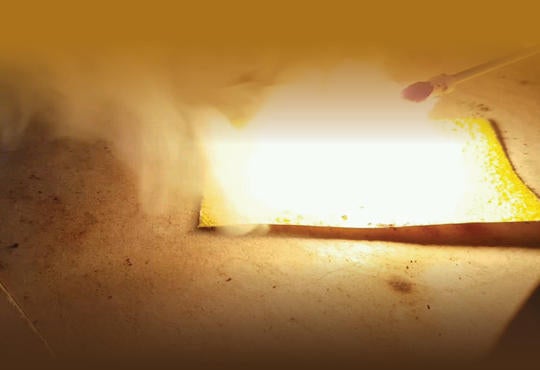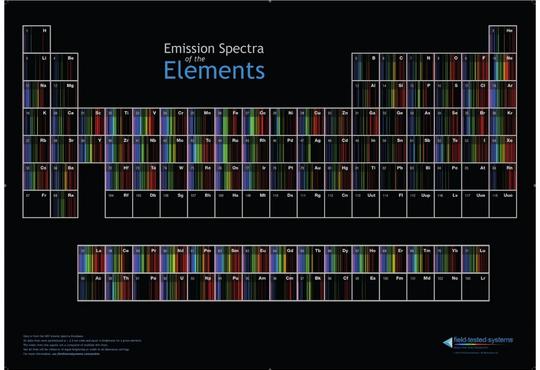Editor’s note: This article is a reprint from the section “Grade 9 & 10” demos from STAO (Science Teachers’ Association of Ontario) Virtual Library. There are “Grade 11 & 12” demos as well and all freely available. Subscribe to the STAO science blog and you will receive email notifications of new and highlighted material.
With a quick internet search, I found the following Flinn Scientific video by Lee Marek presenting this demonstration called “Potato Candle”. Do a quick Google search, and you will find this 10 minute video on YouTube. Lee has a memorable way to incorporate this demonstration into your first day of chemistry class — and it is highly entertaining. There is also a PDF posted on the Flinn Scientific website — https://www.flinnsci.com/the-potato-candle/dc91717/.
Introduction
In this demonstration, a peeled potato is cut into the form of a candle and an almond slice is used as the candle’s “wick.” The teacher lights the almond slice on fire and it burns. The students see the object and make observations about it. Then the teacher blows the flame out and allows the students to get a closer look at the “candle”. This demo is an excellent way of explaining the difference between “observations” and “inferences”.
Materials
- chemical safety goggles
- lab coat or apron
- 1 medium potato, peeled
- sharp knife
- cutting board
- water in a 500 mL beaker
- 1 piece of raw, slivered almond (about 1 mm square in cross-section)
- saucer or Petri dish
- lighter or matches
Safety considerations
Since this demo involves an open flame, it should be conducted only by the teacher.
- Check the fire extinguisher before the class to ensure that it is working.
- Before the demonstration, remind the students of the emergency procedures for fires (extinguisher use, fire exits, etc.).
- Before the demonstration, CHECK FOR SEVERE ALMOND ALLERGIES amongst your students. If allergies are a problem you could substitute a small piece of heavy white card for the slivered almond. The card should burn for the few seconds required for students to make their observations.
- During the demonstration, keep a bucket of sand on hand to extinguish any accidental fire.
Procedure
Wear appropriate PPE (personal protection equipment): safety goggles, lab coat or apron.
- Prepare the “candle” before class as follows: cut the peeled potato into a cylinder. Score a line about 4 mm deep in one end of potato “candle.” If these preparations are done more than 10–15 min before the beginning of class, keep the peeled potato cylinder submerged in tap water.
When the class is in progress:
- Remind students of emergency procedures related to fire (extinguisher use, fire exit, etc.).
- Conduct a brainstorming and discussion session as follows:
- Ask guiding questions to get students to distinguish between observation and inference, using specific examples. Write definitions and examples on the board for reference during the demonstration. For example:

-
Discuss how to make good observations (e.g., take measurements, consider properties that you can directly observe, use your senses and/or tools). Remind students that in a lab they should never taste anything nor smell anything directly. Remind students of the correct indirect smelling technique or “wafting."
-
Explain that you will show them something and that you want them to suggest first examples of OBSERVATIONS and then — only when you ask for them―examples of INFERENCES.
- Ask guiding questions to get students to distinguish between observation and inference, using specific examples. Write definitions and examples on the board for reference during the demonstration. For example:
- Out of sight of the students, place the potato on the saucer, insert the almond sliver into the scored line in the top of the potato. Light the tip of the almond using a lighter.
-
Bring the burning “candle” out to where all students can see it (but not too well). Ask students to voice their OBSERVATIONS. Refer to the notes on the board.
-
Ask students to suggest INFERENCES.
-
Blow out the burning almond, wait 10 s, then allow students to examine “candle” closely.
-
Ask students:
-
whether they still think it was a candle;
-
why they made an inference based on their observations;
-
if they had enough good observations to work with;
-
and what other observations/ways of observing could have been used.
Disposal
The potato and almond should be disposed of in municipal compost if available. Otherwise, dispose of them in the garbage container.
What happens?
The almond slice lights on fire and burns, making the potato and almond structure look like a burning candle.
How does it work?
The almond contains oils which burn when ignited. The potato itself is just a base to hold the almond.
Teaching suggestions/hints
- Prepare the “candle” ahead of time and bring it out in front of the students already burning. Keep them a few metres away, so that they cannot get a good look at the “candle.” The more chance they have to see it is not a real candle, the less effective the demo.
- Be sure to let the almond cool off by waiting 10 s between blowing out the flame and allowing the students to handle the candle.







